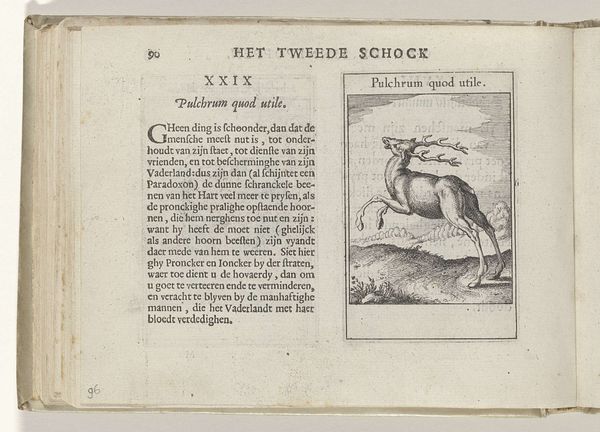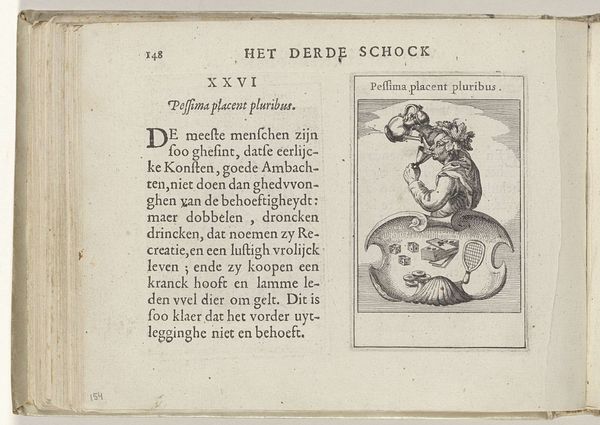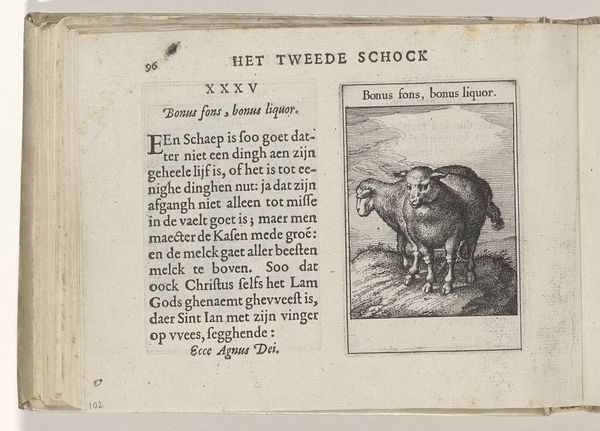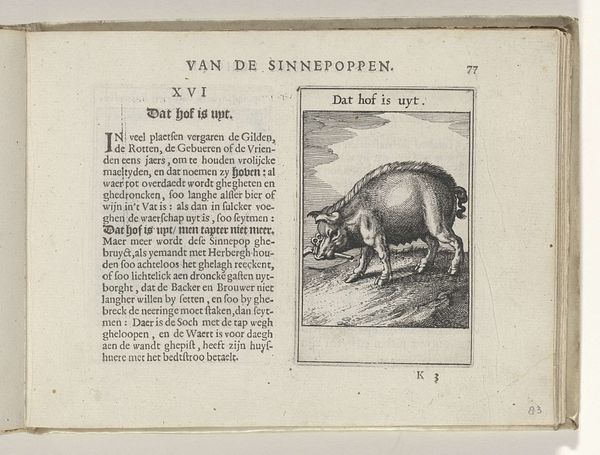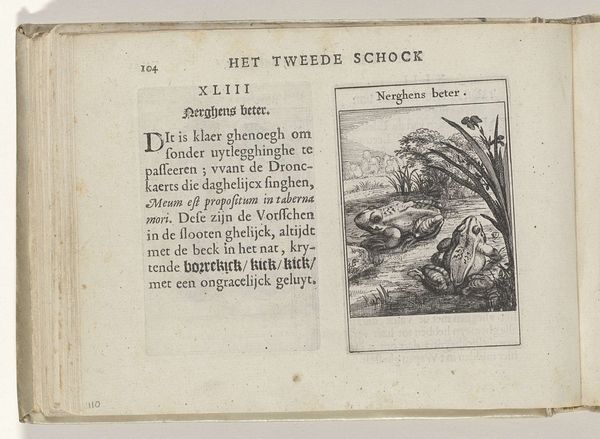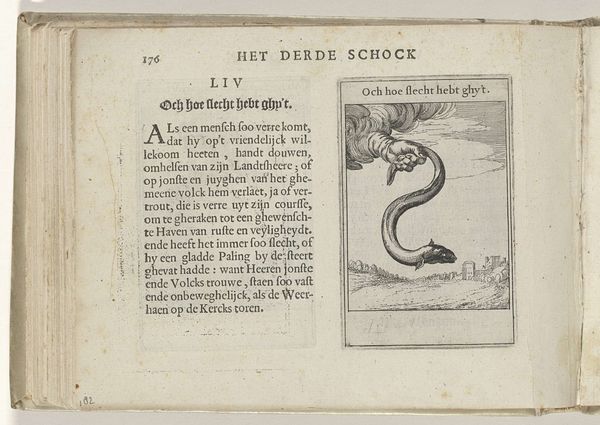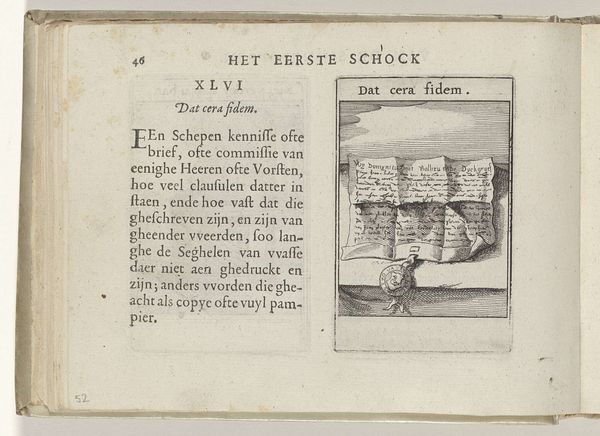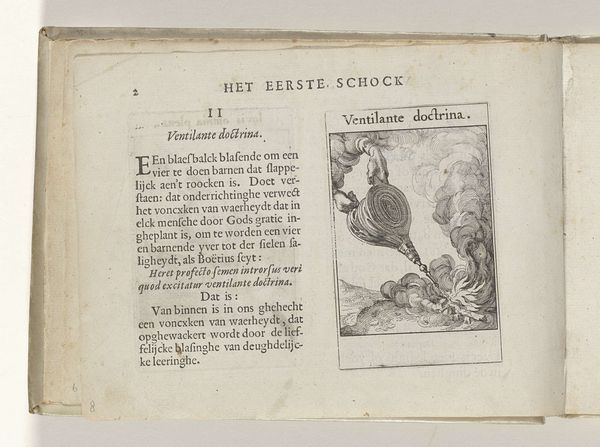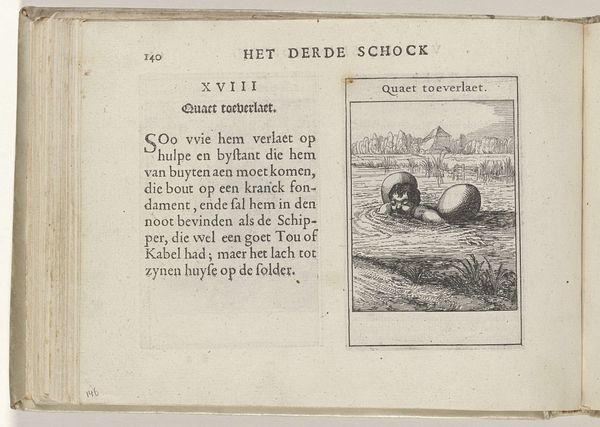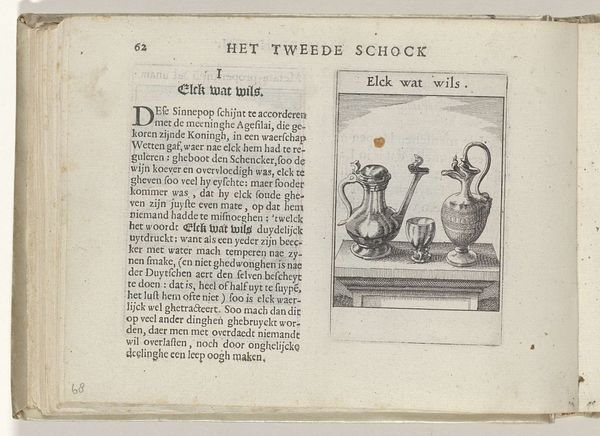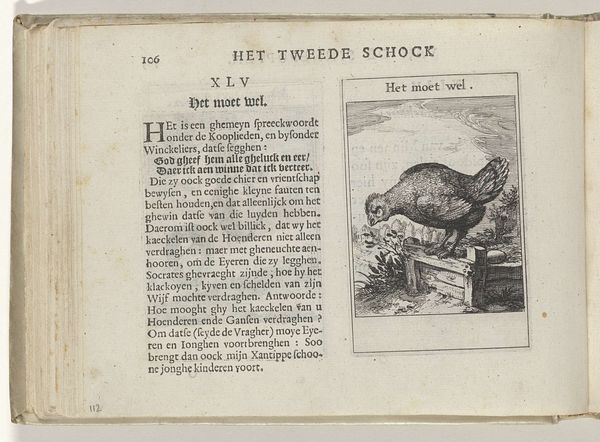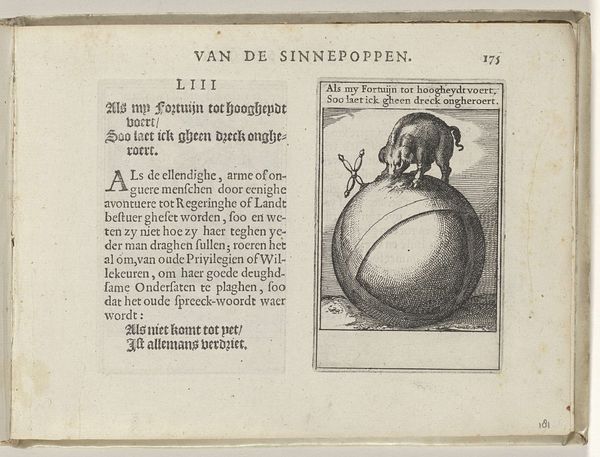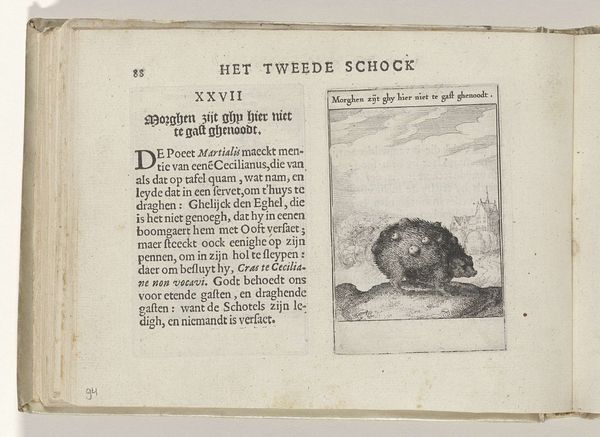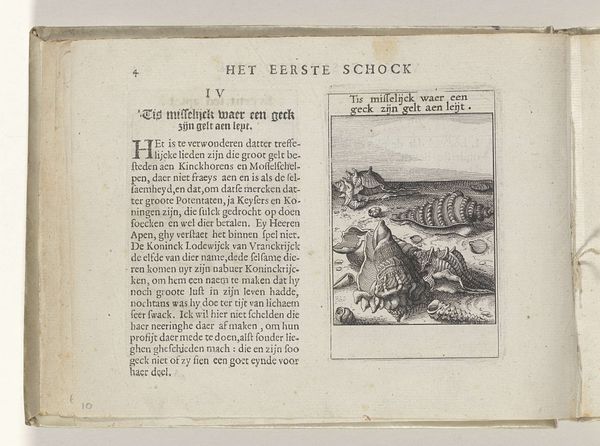
print, etching, engraving
#
narrative-art
#
dutch-golden-age
# print
#
etching
#
figuration
#
engraving
Dimensions: height 137 mm, width 188 mm, height 95 mm, width 60 mm
Copyright: Rijks Museum: Open Domain
Curator: This is "IX Elck zijn waerom" by Roemer Visscher, from 1614. It's a print, employing etching and engraving techniques. Editor: Thanks. It's interesting how this relatively small piece, nestled within the book, draws my attention right away, particularly the detailed textures achieved through engraving. What can you tell me about its structural composition? Curator: The composition invites us to analyze the spatial relationship between the cat and the candle. The interplay of light and shadow achieved through the engraving technique defines the form and texture of the depicted figures and their environment. Note the cat's posture; does it appear natural or posed? What effect does that pose have? Editor: I think it’s posed – its gaze seems deliberate. So, you’re saying the artist uses the interplay of light and shadow to invite questions beyond just the depicted subject? Curator: Precisely. The composition’s verticality, stemming from the candle and grounded by the cat, contributes to its balance and invites semiotic analysis, suggesting a deeper narrative beyond the literal. The print offers the opportunity to reflect on moral meanings using animal allegory. It encourages you to find connections. The texture creates visual interest. But how do those details change the symbolic reading? Editor: I never thought of prints being able to suggest philosophical themes just by focusing on form. It makes me appreciate the visual choices an artist makes to provoke these deeper readings of artwork! Curator: Indeed! Close examination of these formal elements unlocks deeper interpretations.
Comments
No comments
Be the first to comment and join the conversation on the ultimate creative platform.
